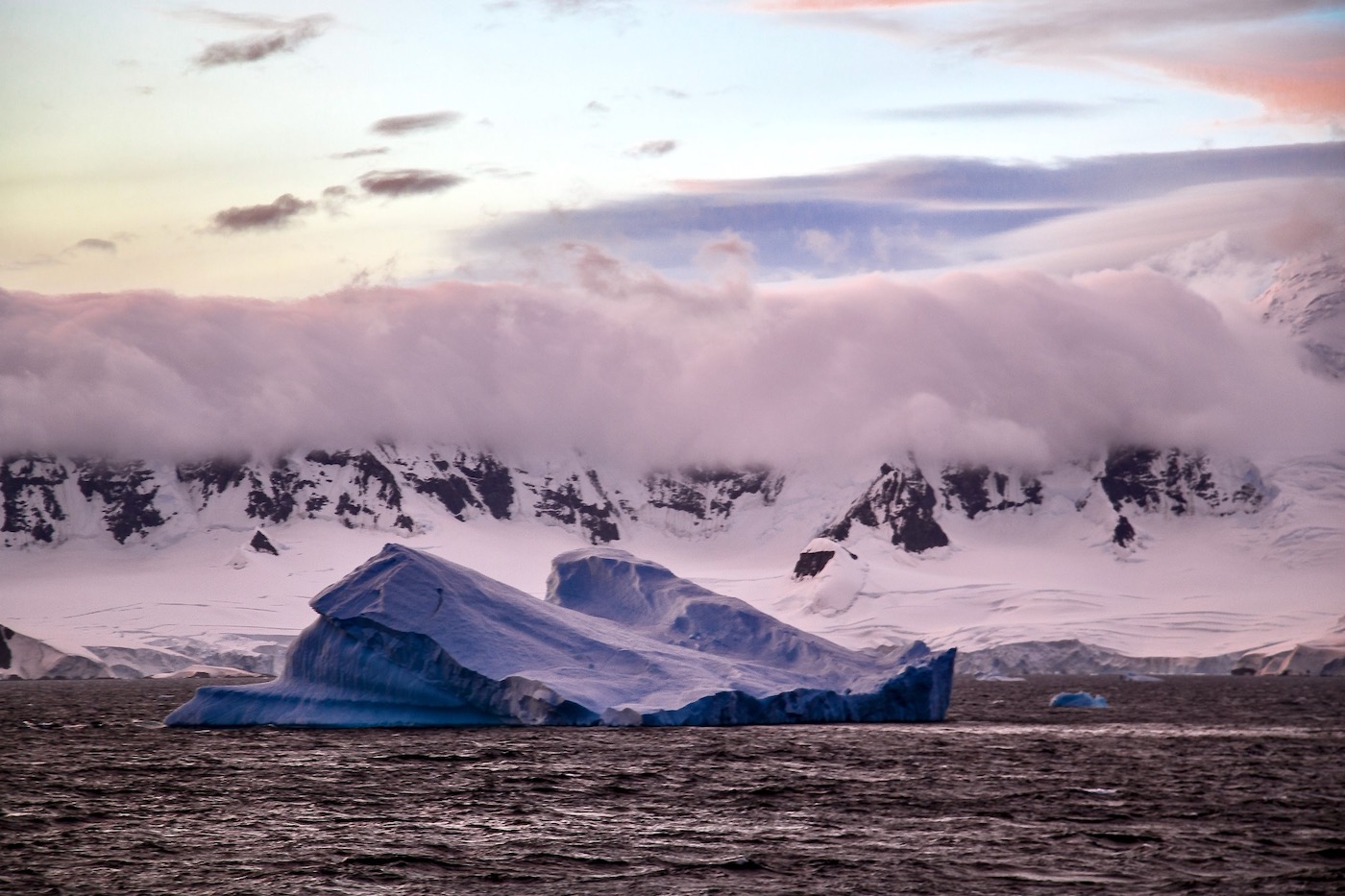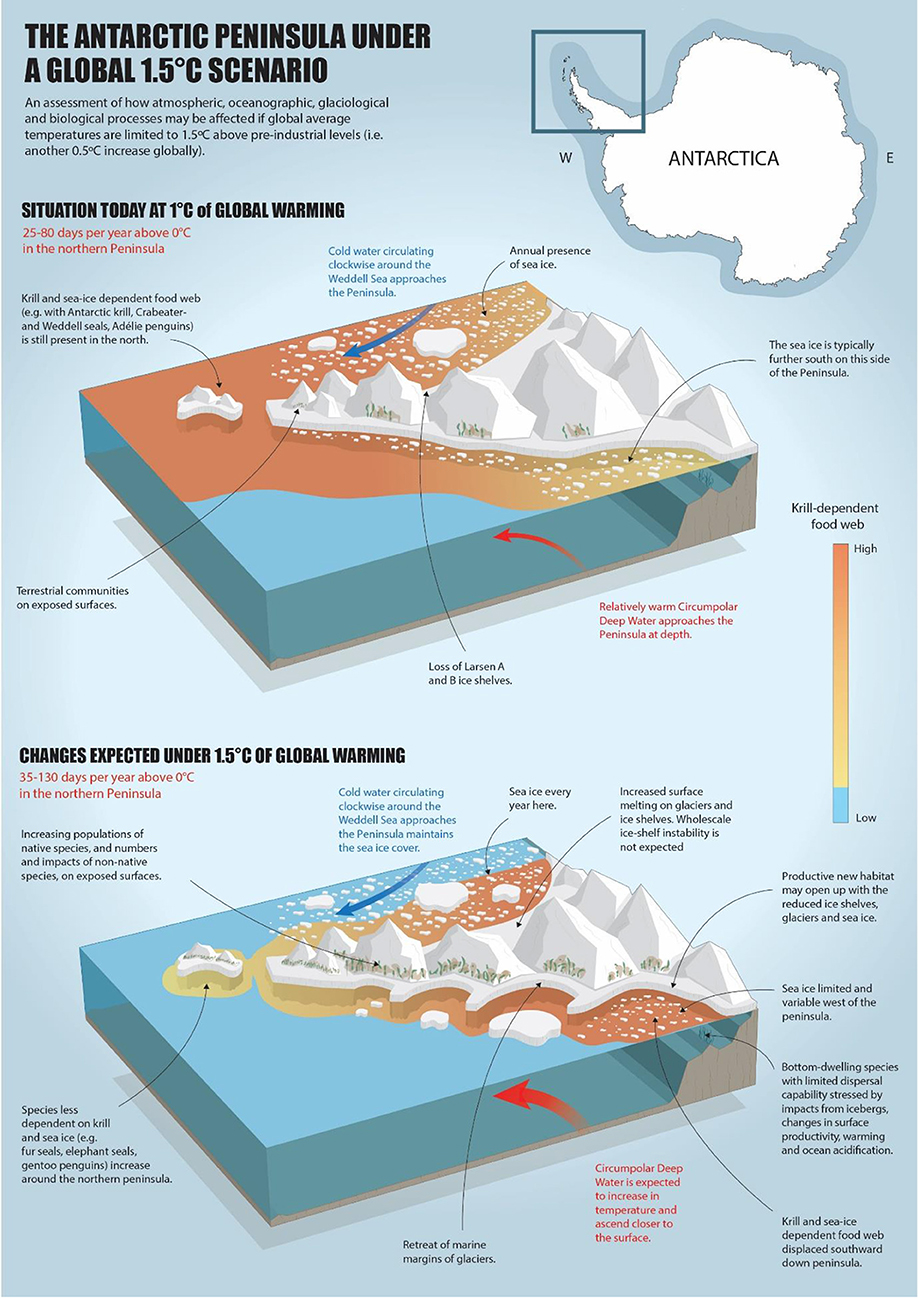 Antarctica. Photo: INACH/Harry Díaz
Antarctica. Photo: INACH/Harry DíazThe western region of the Antarctic Peninsula is quite a peculiar place for several reasons, including being one of the regions of the planet, after the Arctic, that has displayed the most severe environmental changes in the last few decades. The increase in air and ocean temperature has produced a series of other physical changes along the western Antarctic Peninsula (WAP), among which are the decrease in cover and duration of sea ice and increases in the precipitation, melting, and retreat of many glaciers, especially in the southern part of the WAP 1.
Additionally, this area, due to its proximity to South America, brings together a number of anthropogenic activities which include science, logistics, tourism, and resource extraction. Regarding this last point, krill fishing is the main extraction activity in this region, with almost 400,000 tons being extracted per season in recent years. Even though catches have gone up in the last few years, the big problem facing the Convention for the Conservation of Antarctic Marine Living Resources (CCRVMA, for its acronym in Spanish) is not how many are being extracted, but rather where and when.
Changes in the operation of the fleet, combined with environmental changes (for example, rise in temperature and loss of sea ice cover) have allowed access to fishing areas for more time, thus increasing the concentration of catches in time and space, in areas that coincide with the presence of important animal populations that depend on this crustacean, such as penguins, seals, and whales (which have experienced a notable recovery in the last few decades after the prohibition on hunting). This increases the risk for potential resource competition between fishermen and animals that depend on krill.
Due to their characteristic principle of ecosystem-based management (which does not preclude the exploitation of resources, as long as it is done in a sustainable manner and takes into account the effects of fishing on other components of the ecosystem), the marine protected areas (MPAs) in the area of Convention are not necessarily intended to prohibit fishing; rather, they may be established in order to protect various conservation targets, such as species, processes, and ecosystems, among others.
In turn, the establishment of no-take zones, in addition to protecting a particular resource (such as krill), can also be quite useful for making comparisons with areas where fishing does take place, with the goal of evaluating the potential effects of human activities and differentiating them from those produced by environmental variability. Antarctic species have evolved in an environment that is characteristically very cold and stable, and the MPAs may provide them better chances of adapting to an ecosystem currently pressured by severe environmental changes.
 Infographic: Siegert, Martin J/Frontiers. https://doi.org/10.3389/fenvs.2019.00102
Infographic: Siegert, Martin J/Frontiers. https://doi.org/10.3389/fenvs.2019.00102
Toward an MPA in the Antarctic Peninsula
For this reason, since the year 2012, Chile and Argentina have been working together on a proposal to establish an MPA in the area of the Antarctic Peninsula and south of the Scotia Arc (Domain 1 of the CCRVMA). In its first stage, the process included the development of workshops with international experts for the purpose of defining conservation targets, their percentages of protection, and which scientific data were available to formulate a spatial plan for the protection of the species and ecosystems in the region.
-
Representative benthic and pelagic environments,
-
Large scale benthic and pelagic ecosystemic processes,
-
Areas important for the lifecycle of zooplankton species, including Antarctic krill breeding areas,
-
Areas important for the lifecycle stages of fish (especially those species that were overexploited in the past),
-
Distribution of marine mammals and birds during key stages of their life, and
-
Unique or rare benthic environments.
 A new proposal for a marine protected area along the western Antarctic Peninsula by the Governments of Argentina and Chile (October 2018). Source: WWF
A new proposal for a marine protected area along the western Antarctic Peninsula by the Governments of Argentina and Chile (October 2018). Source: WWF
